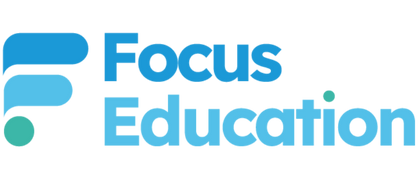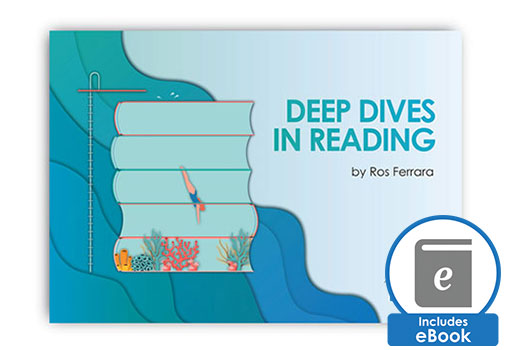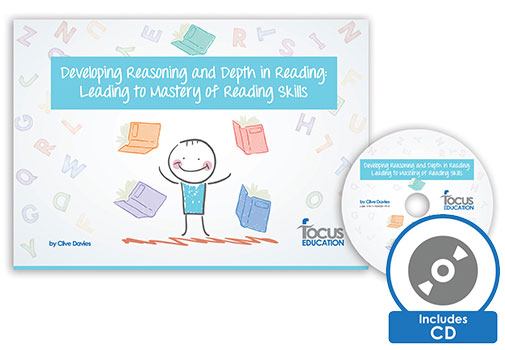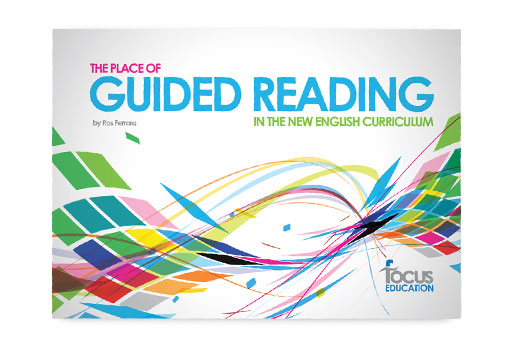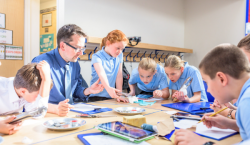
The KS2 reading test results have lit a proverbial bonfire! As a result, many schools are reflecting on and reviewing the way in which reading in primary schools is taught.
Before I consider the effective teaching of reading in primary schools, let us put the dodo to rest! The test was pretty much what I had expected. The first two texts themselves were not actually more demanding than in previous years with the final one presenting a greater challenge in terms of vocabulary items and sentence construction. The challenge lay in the questions. Even the one mark questions required children to make use of a wide knowledge of vocabulary and to re-read quite lengthy sections of text. Questions assumed inferential understanding and called for understanding of authorial intent and the skill to use interpretive and evaluative thinking. Children who were unaccustomed to thinking deeply about reading and who did not have the skills to understand words that were unfamiliar to them found themselves in stormy waters.
So, what might we need to consider?
Firstly, this is a whole school issue not just for Year 6! The curriculum is cumulative and the comprehension objectives need to be taught from the very beginning.
Most importantly, the curriculum requires us to engage, enthuse and motivate children to read for purpose and pleasure and to make them readers for life. Let’s provide a rich and varied diet of a range of high quality, challenging books which will allow children new experiences and visits to exciting and wondrous narrative worlds. Teachers need good knowledge of children’s literature and how to approach texts with children.
My book of the moment
My book of the moment is Oliver Jeffers’ and Sam Winston’s magical “A Child of Books”. I was, and probably still am, a child of books and travelled “across a sea of words” and “over mountains of make-believe” to a world I’d made of stories. Above all, we need to make our children want to be children of books by using a wide range of books from traditional classics to picture books to enthuse and delight.
Currently, we have far too many children who think that reading is about saying the words on the page rather than actively interacting with the text. These children pay little attention to unfamiliar words and gloss over the meaning. They do not self-monitor for understanding and literal understanding is poor. We need a sharp focus on making sure that children, from the very early stages of reading, understand that the core purpose of reading is to get meaning from the words read. This has enormous implications for the teaching of early reading and the emphasis on only using phonics as a decoding tool. The phonically decodable texts are contrived, simple and artificial with very limited content. Whilst children need opportunities to practise phonic skills (and other reading strategies!), they also need opportunities to engage with richer, meaningful texts and to develop comprehension skills.
“Teaching” Comprehension
What are these skills? How to we “teach” comprehension?
I like Gray’s approach:
- Reading the lines – literal
- Reading between the lines – inferential
- Reading beyond the lines – interpretive and evaluative
The first step is to read the lines to gain literal understanding. When first approaching a text, children need to read the text, identify any unfamiliar words and discuss and find their meaning and question anything they do not understand. I think that we have not focused sufficiently on this essential process. Literal understanding is so much more than superficial understanding. It involves making sense of the text, knowing the meaning of words and how they fit together in a sentence, remembering the sequence of events and main ideas, knowing about typical characters and their traits. Successful literal comprehension is dependent on being able to relate different parts of the text to each other and to draw on knowledge of the world, life experiences, story conventions, books, language and vocabulary. It is the first step towards deeper understanding.
Vocabulary across the curriculum
It is here that the role of vocabulary is clear. A focus on vocabulary across the curriculum is vital. English is full of multiple meanings. In fact, 70% of our words are polysemous – have more than one meaning according to their context. We cannot possibly teach children all the words they need to know. Instead they need to be enabled as “word detectives” to have the skills to work out the meaning of words they are not familiar with. This can involve a range of approaches: use of the context to work out a possible meaning, finding the root in a word and using it to narrow down possible meanings, good knowledge of prefixes and suffixes and how they build on to a root word and affect meaning, for example. Frequent opportunities to work with words and discuss meanings: zone of relevance, clines, developing banks of synonyms beyond the pedestrian alternatives to said, walk, big etc. The Descriptosaurus range offers a truly rich collection of words, phrases and language to be explored, understood and used.
I would expect to see this vocabulary work as part of a more independent pre-read or in a pre-teaching session. Children need to be shown the importance of not glossing over words they do not understand in a first read and how to monitor for meaning and understanding.
Using prior knowledge
As well as the sharp focus on vocabulary, effective literal understanding involves knowing the main events or key points in the text. Summarising the key events in a specified number of sentences, summarising the content of a paragraph in a sentence or developing sub-headings for paragraphs or sections can also be part of a pre-read or teach session. Readers should also be encouraged to use prior knowledge and make connections with both their own knowledge of the world and book knowledge to ensure literal understanding.
Inferential skills
Only when this is in place can we move on to inferential understanding. High quality writers leave gaps for readers to fill in – reading between the lines. Inference runs hand in hand with analysis of the writer’s craft, including word and language choices, empathising with characters, making predictions, making comparisons between characters, settings, plots, books and authors, visualising and elaborating. Inference is dependent on these and these are dependent on inference and an effective reader continuously draws inferences to make sense of and gain deeper understanding of the text.
Inferential skills should be taught from early on. Drawing inference is not restricted to dense text. Illustrations offer excellent opportunities to work with these skills. Anthony Browne’s rich illustrations create multi-layered texts from which connections and predictions can be made and inferences drawn. Books such as “Rosie’s Walk” by Pat Hutchins and Sendak’s “Where the Wild Things Are” have significant gaps left for the reader to fill. Similarly, Shaun Tan’s “The Arrival” and David Weisner’s “Flotsam” are wordless picture books for older children and the meaning is dependent on the reader drawing inferences.
Ask better and fewer questions
Good questioning is vital. We need to be asking better and fewer questions so that children are able to give extended and well-developed answers. We also need to guide children towards supporting their answers with evidence from the text whether written or an image. In KS1 children should be able to support their opinion with evidence, finding clues from the book. In KS2 they should be able to explain why the evidence proves their answer. These responses need modelling and scaffolding. The use of prompts and sentence structures will help the journey towards independence. Teacher prompts for example: “Tell me more…, How do you know…, What makes you think… “Child responses: “I think…because…, In my opinion…, The writer…so that…, …led me to think that…”
With the deep understanding that reading between the lines brings, children are able to go beyond the lines and develop interpretive and evaluative and critical thinking. This will involve making judgements, justifying and refining opinions, considering themes, viewpoints and authorial intent, comparing and evaluating texts and authors. Again our questioning is crucial. For example, “What does the author think about …? What is your opinion? What evidence do you have to support your view? What would this character think about …? How did you know there was likely to be a happy ending? Why did the author choose this setting? What makes this a successful text? Does it work? Could it be better? Which text is giving the writer’s own opinion? How do you know?”
Reading for life
If we can guide children through this process, using challenging, exciting and varied texts, we will have a job well done! Children who experienced good quality teaching were unfazed by the test and its challenging questions and were able to demonstrate their knowledge, skills and understanding. But more than this, hopefully, they are readers for life who will recall the memories we gave them that made them children of books.
Continue the Conversation
If you still have questions about reading in the English curriculum, join me on twitter @FocusRosf or for related publications click on the links below or get in touch with the Focus Education office on 01457 821 818.
Ros has over 30 years’ experience working in teaching and leadership roles in schools, both nationally and internationally, as well as leadership roles within Local Authority advisory teams.
With extensive experience in all aspects of school improvement and contexts, as well as specialisms in English and EAL, Ros has developed inspirational, creative resources and training which puts English at the heart of the curriculum.

